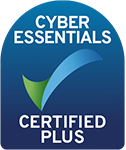If you have been looking at replacing or upgrading a major software system recently, such as a practice management or case management system, you will no doubt have encountered the terms ‘Cloud’, ’SaaS’ and ‘Hosted’. You may also be rather confused by what they mean and the implications to your practice.
The tech industry loves to use acronyms and buzzwords and this is very evident in the way modern software can be provided. Whilst this might be useful for an IT professional, it unfortunately leads to confusion and frustration amongst partners of Law and Accountancy firms, who often are responsible for making decisions regarding such systems.
If you’re currently in the process of upgrading your practice’s software, and are fed up with having to trying to interpret industry jargon, here is the Pro Drive guide as to what these terms represent and what that means to you.
 Cloud
Cloud
The term ‘cloud’ is a generic term that is often applied to any software which is not running on servers owned by your company and operating from your offices. In simple terms, its software that is accessed across the internet.
Cloud software has been around for many years now in various forms and offers both financial and operational benefits to firms. From a financial perspective, cloud software is usually charged on a monthly, quarterly or annual basis rather than the traditional ‘up front’ license fee. Operationally, it means that the ‘cloud’ software provider is usually responsible for maintaining and updating the software.
Cloud software has grown in popularity as firms have moved towards hybrid working models with a major part of this shift occurring during the covid pandemic and is usually simple to access for home and remote workers.
Cloud encompasses SaaS (Software as a Service) and Hosted software.
Hosted
Hosted software, often also called cloud software, is actually a ‘halfway house’ between traditional on premise server based software and SaaS. The software is essentially the same software that some firms may still run on servers, but it is run on servers that are hosted in a datacentre. This hosting is sometimes done by the software provider but more usually by a 3rd party they contract with.
Hosted software is quite common in the Accountancy and Legal sectors as many software providers have not yet made the full transition to Software as a Service. In fact many legal and accountancy practices will make their own hosting arrangements with their IT provider when moving to the cloud, rather than relying on their software providers.
The advantages of hosted software are that you no longer need to worry about maintaining expensive servers, your data will be safer when held in a secure datacentre and you have all the benefits of being able to access the software, wherever you need to.
The main disadvantages of the hosted software model are that the costs can be higher than Software as a Service. You may also have issues with integration between different software systems when hosted in different locations – one reason why many firms make hosting arrangements for themselves. Additionally, whilst updates are usually taken care of by the hosting provider, they are usually not as seamless as with Software as a Service.
SaaS (Software as a Service)
SaaS software is true cloud software and is hosted and maintained by the software provider. Its usually accessed via a web browser and is not tied to working on any specific type of computer.
Software which is relatively new to the market will have been developed from the ground up as software as a service and is only available through a web browser. Good examples are the accounting software Xero and the legal practice management software Clio. These more modern systems are usually free of design constraints from adapting older software and usually have clean and easy to use user interfaces.
Aside from usability, Software as a Service has a number of other advantages over hosted and traditional software. One of the key ones being that they often have easier to setup integrations to other cloud software. This avoids staff having to rekey information in multiple systems and allows cross system reporting and functionality – all of which save significant admin time. Updates are also seamless and security usually of a high standard.
The main downside of Software as a Service is that once you are using it, it becomes much harder to move to another system. Software as a Service providers know this and often entice you with attractive commercial proposals, only to increase their rates significantly at a later date. Anyone using Microsoft 365 will have experienced this recently.
How do you make the right decision?
There is no simple answer to this question. However its important that you cut through the jargon and understand how your cloud software will be delivered, how it will work with you other business applications how updates and security controls will be applied.
If you are about to start a software upgrade project and would like someone to help translate the technical jargon for you, get in touch with us using the form below or call us on 0330 124 3599.







